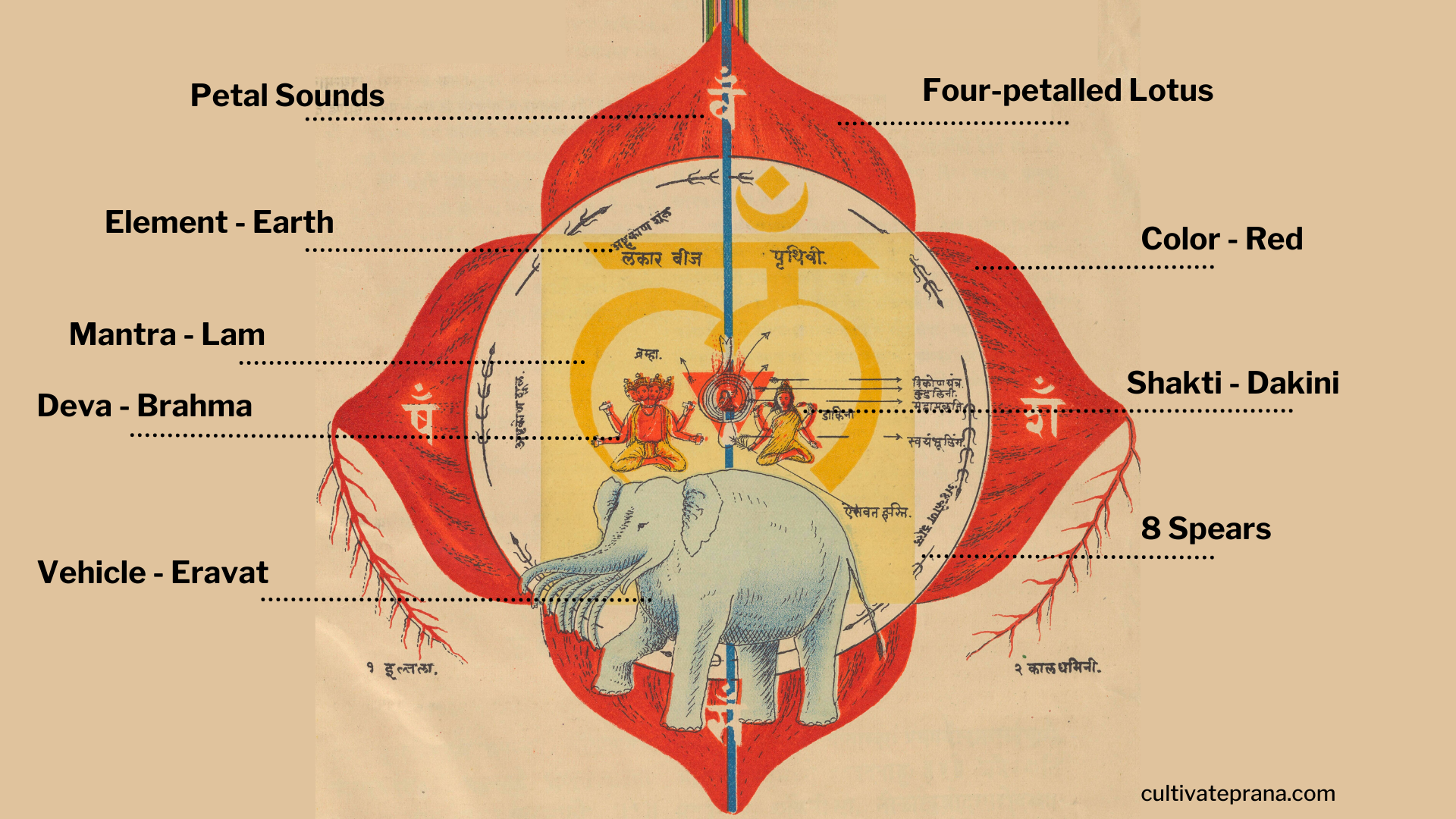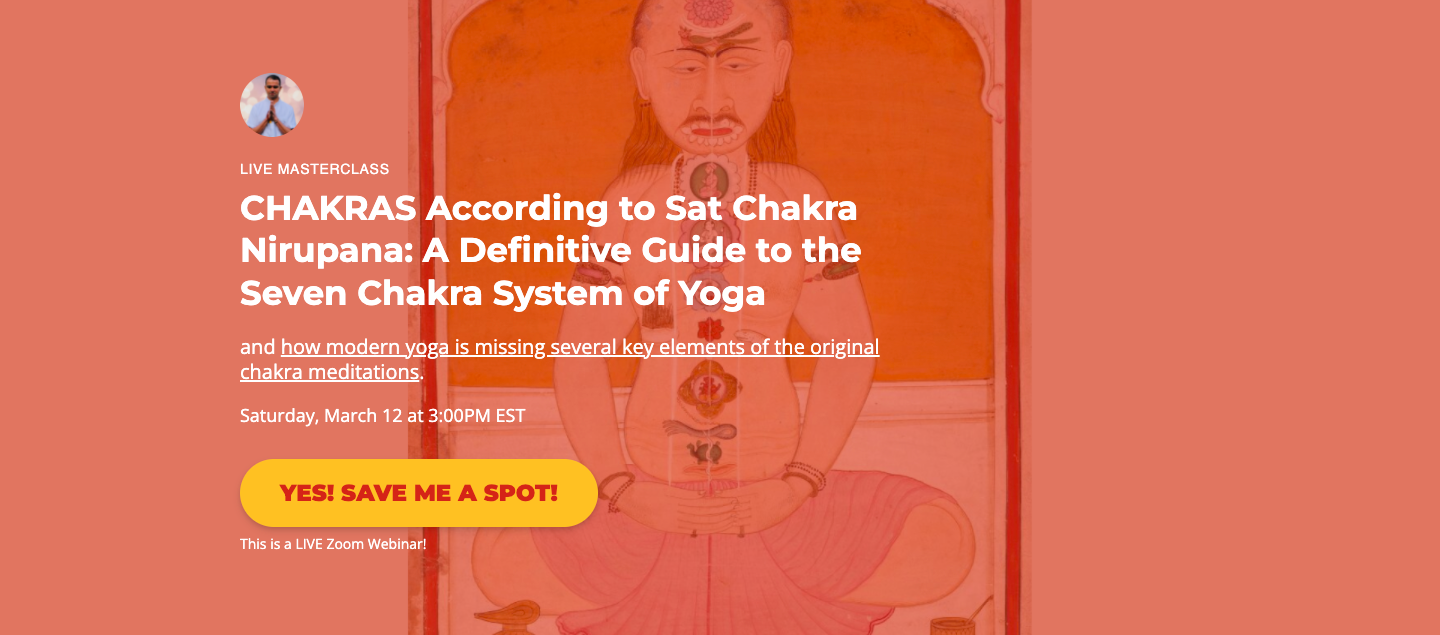Muladhara Chakra: The basis of our physical existence
By Devendra Narayan, PhD.
.png)
Image credit: MS Sanskrit 391. Authored by Svami Hamsasvarupa, 1900s. Wellcome Collection. The original image has been modified for use in this article.
- Muladhara is the four-petaled lotus (chakra) located around the perineum.
- Muladhara chakra represents the basis of our physical existence.
- One who meditates on this chakra gets absolute control over speech, gains knowledge, and enjoys good health.
In my last article, I discussed the 39 major nadis of the subtle body and their connection to the 7 main inner holy cities (chakras). In this article, I examine the first of the seven main chakras, Muladhara, as described in Shatchakra Niroopana Chittra, written in Sanskrit in the 16th century. A Hindi translation of this text by Shri Swami Hansa Swaroop from the early 1900s was recently added to the Wellcome Library's digital collection [1]. And this article attempts to precisely translate this seminal text into English.
What are the benefits of learning about chakras and their architecture?
Chakras constitute a network of spiritual energy centers in our subtle body and serve as an inner pilgrimage. That’s because one can meditate on the deities, elements, sounds, and colors of each chakra. Knowing the architecture and the divinity residing in each chakra will help you navigate this inner pilgrimage successfully. And one should start this journey at the root chakra, Muladhara.
Muladhara Chakra

Credit: MS Sanskrit 391. Authored by Svami Hamsasvarupa, 1900s. Wellcome Collection. The original image has been modified for use in this article.
Below the genitals and two finger widths above the anus, touching the mouth of the Shushmana Nadi is the four-petaled lotus, Muladhara chakra. All four petals of this lotus are blood red and facing downward (adho mukha). A practitioner may flip the petals by either engaging the Mula Bandha or visualizing them facing upwards (urdhva mukha).
Carved on the four petals in bright golden letters are the sounds (varnas) vam, sham, sam, shham [2]. (note that in many modern drawings of Muladhara Chakra the positions of letters 'sam' and 'shham' are interchanged).
Located in the center of the four-petaled lotus is the earth (prithvi) element represented by a yellow square. Surrounding the square in a circle are eight spears that represent the eight directions. The mantra Lam is carved in brilliant yellow color at the center of the earth element. It is the seed sound (bija mantra) of earth.
This four-petalled lotus chakra, in turn, rides on the elephant Airavat (which represents the energy that controls the senses). In the lap of the lotus is Brahma, in a child form. He has four heads and four hands and is surrounded by the radiance of dawn sunlight. Brahma's four heads are symbols of the constant oration of the four Vedas, represented by each hand holding a Veda.
Within the earth element of Muladhara Chakra is the shakti Dakini with brilliant red eyes and shining like the Sun. The four-armed Devi gives energy and light to the child form of Brahma because, even as the creator, he cannot create without this divine feminine energy. Yogis can receive supreme fulfillment (Siddhis) from Dakini.

Credit: MS Sanskrit 391. Authored by Svami Hamsasvarupa, 1900s. Wellcome Collection. The original image has been modified for use in this article.
In the center of the Muladhara chakra and connected to the mouth of the Vajra Nadi is a triangular yantra called Triprakhya. The vayu (wind) Kandarpa within this triangular yantra gives life to all beings. This vayu shines brightly as ten million Suns, circulating all over the body and keeping everything in order.
As shown above, the triangle contains Shiva linga (a standing pillar or ovoid stone) in the form of Svayambhu linga (naturally formed linga), facing downwards. By gaining knowledge and by meditating upon it, this linga manifests like a tender leaf and is bright like the full moon.
Within the triangle resides the mahamaya (power of illusion) kula Kundalini. It is thin, like the stalk of a lotus plant, and conceals the opening of the shushmana nadi with its mouth. The Kula Kundalini coils the Svayambhu linga three and a half times like a sleeping serpent. Keeping the beings of the world alive by inspiring and exhaling, this Kundalini buzzes like a swarm of bumble bees.
Lastly, at the center of the Kundalini lives an ultrafine and intensely bright form of Mahaprakrakriti (ultimate source of energy) called Paramkala. It illuminates the Universe and provides the seeker with true knowledge [3].
The above description of the muladhara chakra covers the complete architecture of the first spiritual center within the subtle body. In the next article, you’ll learn about the second of the seven main spiritual centers, Swadhisthana Chakra.
About the Author
Devendra Narayan is a scientist, yoga teacher, breathworker, scholar and founder of Cultivate Prana Academy. Cultivate Prana's mission is to empower modern day healers through education that integrates ancient wisdom and modern science.
Sources:
- Svāmihaṃsasvarūpakr̥tam Ṣaṭcakranirūpaṇacitram : bhāṣyasamalaṃkr̥taṃ bhāṣāṭīkopetañ ca = Shatchakra niroopana chittra with bhashya and bhasha containing the pictures of the different nerves and plexuses of the human body with their full description showing the easiest method how to practise pranayam by the mental suspension of breath through meditation only ; by Shri Swami Hansa Swaroop.
- Sounds of the Chakras by Harish Johari.
- Complete Description & Activation of Muladhara from Shat Chakra Nirupanam by the Sanskrit Channel.
-------
Copyright 2021 Cultivate Prana. All rights reserved.

